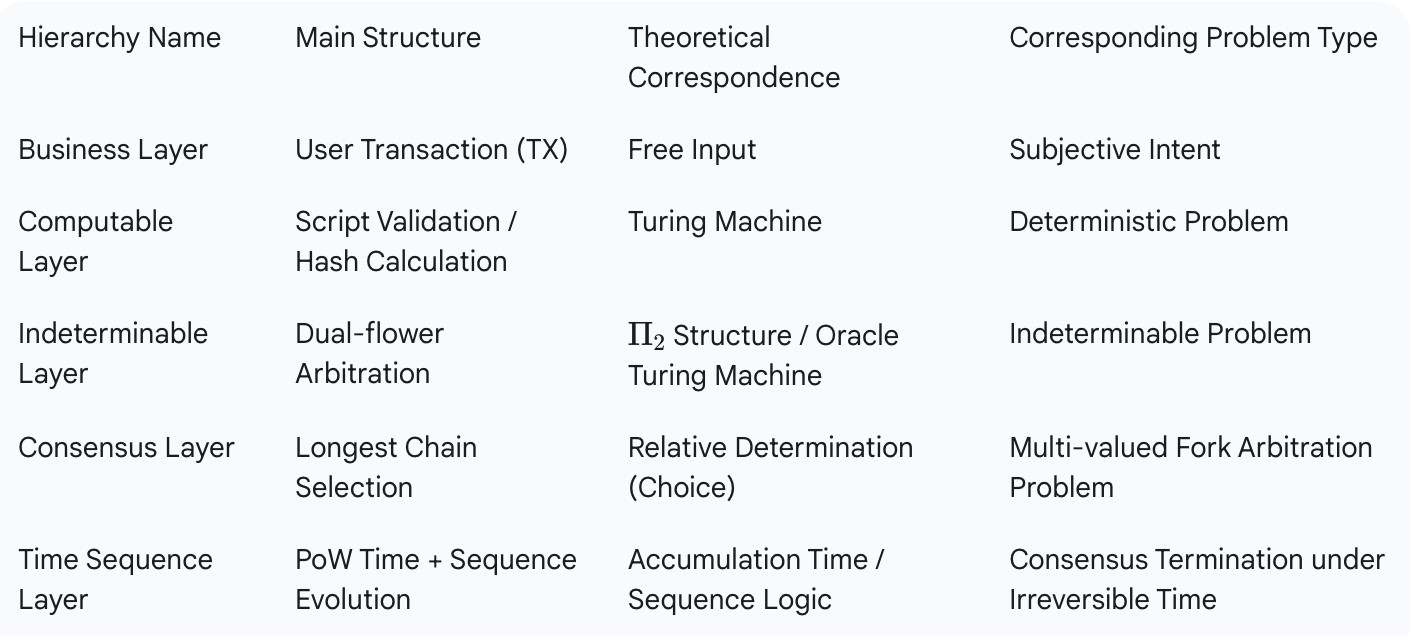
How do we understand Bitcoin as a decentralized “temporal order generating system”? What kind of internal logical structure does it operate on?
In Turing’s doctoral thesis “Systems of Logic Based on Ordinals”, he proposed a new approach to addressing the incompleteness of formal systems: using oracle Turing machines + transfinite ordinal evolution mechanisms to handle problems that conventional Turing machines cannot decide. This article adopts that theoretical framework to construct a five-layer structural model of Bitcoin, revealing its underlying computational philosophy:
Each transaction in this layer originates from real-world intent. It has not yet been validated and merely exists as a potential input awaiting processing.
At this level, Bitcoin relies on Turing machine theory to process the legitimacy of transactions — computations that are deterministic and terminating.
This type of problem has the form (∀x)(∃y)R(x,y) — i.e., for all historical states, does there exist some “retrospective” confirmation path? This is precisely the Π₂ structure Turing referred to as “undecidable”.
Note: Judgment at this level cannot be handled by a Turing machine and must introduce a structure like an “oracle Turing machine” — for instance, real-world PoW temporal ordering.
This represents an “adjudication” behavior — selecting one among branches that cannot both be true. This adjudication itself cannot be internally validated for correctness, but the system allows for global convergence within finite time.
This layer fuses two dimensions:
At this layer, Bitcoin becomes a real-world oracle system, granting the entire business process a final and irreversible temporal order.

Bitcoin is not merely a ledger system. It is a real structure that transcends the limits of formal systems, completing the loop from:
→ Intent input→ Computable validation→ Undecidable arbitration→ Multi-perspective consensus→ Global temporal order
It uses real, unforgeable “thermodynamic time” as the oracle, constructing a future-facing, irreversible history-generating system. As you can see, this is Turing’s unfinished dream of formal systems — realized through an engineering path in Bitcoin.